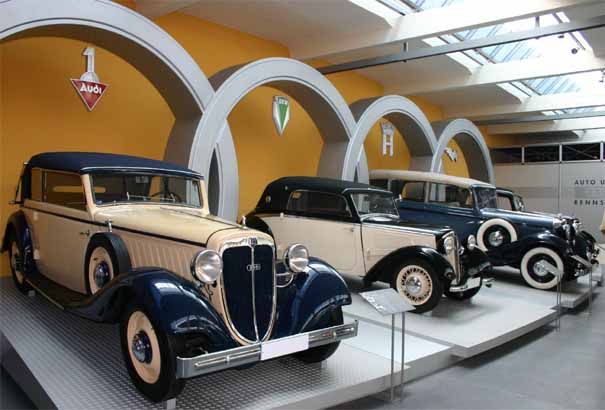An amazing exhibition organized by The Audi aimed at commemorating a century of the Audi brand. In this exhibition, entitled “From Horch to Audi”, The Forum illustrates the history of this manufacturer, and how it gained a new name. Historic cars have been collected together from all over Europe, and displayed for audience from March 11 to July 16, 2009. Visitors to the Audi museum mobile were able to see thirteen cars dating from before the World War II, including the first model to bear the Audi name, a 1911 Audi Type A, and a world premiere, which is the 1935 Audi 225 Front Special Roadster, just recently rebuilt. Both these cars, and many other exhibits as well, are the only examples to be seen anywhere in the world.
AUDI AG indeed had its ups and downs during its often turbulent history. Before the end of the 19th century, August Horch established a company known as Horch & Cie. Motorwagen Werke in Cologne. In 1902 he moved it to Zwickau in Saxony, and in 1904 it was incorporated into a joint-stock company. In 1909, following a dispute with the members of the executive and supervisory boards, August Horch left the company and a few weeks later established a second automobile manufacturing operation, also in Zwickau. Since he could not use his own name, which was a registered brand, he chose a Latin translation instead: the German word “Horch!” (meaning “Listen!”) became “Audi”. The use of this Latin imperative was suggested by the son of one of August Horch’s business partners, a student of Latin, who had followed the discussion about a new name with interest. Car production began on a small scale, based on Horch’s basic principle of building only “good, strong cars”, but only a few years later Audi had already developed into one of the best-known German automobile brands. It enjoyed success in competition from the very start. Victories in Austrian Alpine Rallies between 1911 and 1914 made the Audi name familiar on the international scene. The Audi Type C 14/35 PS was especially successful, and acquired the name “Alpine Victorâ”.



